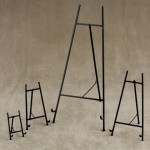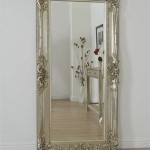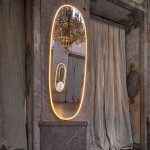The Phenomenon and Psychology of Mirrors on Ceilings
Mirrors strategically placed on ceilings, particularly in bedrooms, represent a design choice that has sparked considerable debate and discussion. This design trend, often associated with heightened sensuality or a desire for expanded visual space, warrants a thorough examination. This article delves into the various facets of this phenomenon, exploring its historical context, psychological underpinnings, practical considerations, and potential implications.
The presence of a mirror on the ceiling immediately alters the perception of a room. It introduces an element of surprise, curiosity, and, in some cases, even discomfort. Understanding the motivations behind this design selection necessitates an exploration of both its conscious and subconscious appeal.
Historical Context and Cultural Significance
While often perceived as a contemporary trend, the use of mirrors for decorative and psychological purposes has a long and varied history. Ancient civilizations, such as the Egyptians and Romans, employed polished metal surfaces to reflect light and create illusions of grandeur. These early forms of mirrors were often associated with status and wealth, reflecting not only the individual but also their societal importance.
In more recent history, the sexual revolution of the 1960s and 70s saw a proliferation of mirrored surfaces in interior design, particularly within the context of adult entertainment and personal expression. This association, while not universally applicable, has contributed to the contemporary perception of mirrors on ceilings as suggestive or provocative.
Beyond the explicit association with sexuality, mirrors have also been employed in various spiritual and philosophical practices. They can represent self-reflection, introspection, and a deeper understanding of one's own identity. The placement of a mirror, therefore, can be interpreted as a conscious effort to enhance these aspects of personal growth and awareness.
Architecturally, mirrors have been used for centuries to manipulate spatial perception. In smaller rooms, a well-placed mirror can create the illusion of greater depth and width, making the space feel less confined. This principle is often applied in retail settings to enhance the perceived size of a store and encourage customer exploration. The application of this principle to ceilings, however, is a more deliberate and unconventional choice that requires careful consideration.
Psychological Impact and Perceptual Alterations
The psychological impact of mirrors on ceilings is multifaceted and depends largely on the individual's personality, cultural background, and personal experiences. One of the primary effects is the disruption of conventional spatial awareness. The reflection of the room, and its occupants, on the ceiling can create a sense of disorientation or unease, as the expected spatial relationships are inverted or distorted.
This disorientation can also trigger feelings of exposure or vulnerability. The reflected image creates a sense of being watched, which can be particularly pronounced in a private space such as a bedroom. For some, this feeling of exposure may be exciting or empowering, while for others it can be uncomfortable or even anxiety-inducing.
Conversely, some individuals find the reflected image aesthetically pleasing and visually stimulating. The added perspective can reveal details that might otherwise go unnoticed, creating a dynamic and engaging visual experience. The mirror can also amplify the effects of lighting, creating interesting patterns of light and shadow that enhance the ambiance of the room.
The psychological impact can also extend to the realm of self-perception. Seeing oneself reflected from above can lead to a heightened awareness of one's physical appearance and body image. This increased awareness can be either positive or negative, depending on the individual's self-esteem and body confidence. For some, it may foster a sense of self-acceptance and appreciation, while for others it may trigger feelings of insecurity or self-consciousness.
Furthermore, the novelty of a mirrored ceiling can contribute to a sense of playfulness and experimentation in the bedroom. It can create a more relaxed and liberated atmosphere, encouraging individuals to explore their sensuality and embrace their desires. This can be particularly relevant for couples seeking to enhance their intimacy and connection.
Practical Considerations and Implementation Challenges
Beyond the psychological and aesthetic considerations, the practical aspects of installing and maintaining a mirror on the ceiling are significant. The weight and size of the mirror must be carefully considered to ensure structural safety. Improper installation can lead to the mirror detaching and falling, posing a serious risk of injury.
The type of adhesive or mounting system used is crucial for a secure and long-lasting installation. Professional installation is highly recommended to ensure that the mirror is properly supported and that all safety precautions are taken. Furthermore, the ceiling surface must be thoroughly prepared to provide a stable and even base for the mirror.
Another practical consideration is the maintenance and cleaning of the mirrored surface. Dust, fingerprints, and other debris can accumulate on the mirror, obscuring the reflection and detracting from its aesthetic appeal. Regular cleaning with appropriate cleaning products is necessary to maintain the mirror's clarity and shine.
The lighting in the room also plays a crucial role in the visual impact of the mirror. Excessive or poorly directed lighting can create glare and reflections that are distracting or uncomfortable. Conversely, strategically placed lighting can enhance the mirror's reflective properties and create a more dramatic and visually appealing effect. Dimmer switches can offer flexibility in controlling the light intensity and creating different moods.
Finally, the acoustics of the room should be considered. Large, flat surfaces like mirrors can reflect sound waves, leading to echoes and reverberations. In a bedroom, this can be particularly problematic, as it can disrupt sleep and relaxation. Acoustic treatments, such as carpets, curtains, and upholstered furniture, can help to absorb sound waves and reduce echoes.
In summary, the decision to install a mirror on the ceiling is a multifaceted one that requires careful consideration of psychological, aesthetic, and practical factors. While the design choice may offer visual interest and potentially enhance intimacy, it also carries potential risks and challenges that must be addressed to ensure a safe and satisfying outcome.

Ceiling Mirrors For Bedrooms Pictures Options Tips Ideas

10 Ceiling Mirror Above Bed Decoomo Creative Bedroom Home

Mirrored Ceiling In Interior The Best 20 Design Ideas

Udecor Mirror 2 Ft X Silver Lay In Ceiling Tile 40 Sq Case Gs 001 The Home Depot
Is It Okay To Place A Mirror On Top Of The Bedroom Ceiling Facing Bed What Are Advantages And Disadvantages Quora

Stick Wilko S 11 Mirror Tiles To Your Ceiling Boost Sex Life This Relationship Expert Insists The Sun

Glassless Mirror Ceiling Tiles En Pointe Enterprises

Mirrored Ceilings Coastal Glass And Glazing Services Swansea

Mirror On The Ceiling Why Foster Eliasson Mvrdv And Others Aesthetic Grounds

Mirror Ceiling Tile 1800ceiling








